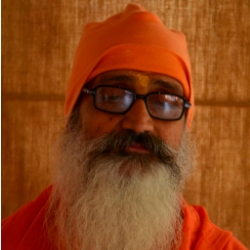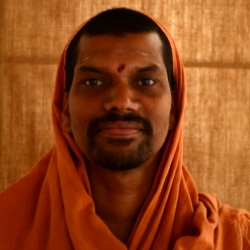Acharyas

Acharya Swami Vishnu Tirtha, is the senior-most Acharya in Uttarkashi and the chief patron of the Trust. A disciple of Sri Swami Narahari Tirthaji of Gangotri, he has studied the darshanas and vyakarana from the Sri Kailash Brahmavidya Peeth, Rishikesh and from Mahamandaleswar Divyananda Saraswatiji. The sannyasis and sadhakas of Uttarkashi have benefited immensely from his lucid teaching of Vedanta.
Swami Vishnu Tirtha ji Maharaj is the senior most acharya of Adi Shankara Brahma Vidya Peeth. He embarked on his spiritual journey in 1971, while he was still a teenager, wandering in distant lands in his quest.

Acharya Swami Sharvananda Giri, is also the Vice-president of the Trust. Initiated into sannyasa Brahmaleen Acharya Mahamandaleshvar Swami Vidyanandaji Maharaj of Kailash Ashram, Rishikesh, he has been tirelessly engaged in study, sadhana and service for over thirty years. He is also associated with the Bharat Sevashram Sangha, Uttarkashi.
Swami Sharvananda Giri ji is one among the three acharyas of Adi Shankara Brahma Vidya Peeth, since 2009.
Swamiji was born in 1953 in Kolkata, West Bengal. After completing his schooling, he continued his higher studies and became and engineer. After having worked for fourteen years as an engineer at the Indian Ordinance Factory, Ministry of Defence, Swamiji renounced that life in 1984 and embarked on his spiritual journey at the age of twenty-nine.

Acharya Swami HaribrahmendranandaTirtha, also the Secretary of the Trust has been diligently teaching Vedanta for over fifteen years after having studied under several noted Acharyas of Uttarkashi. He was inspired to come to Uttarkashi from Kerala at the young age of fifteen years and at sixteen years was initiated into sannyasa deeksha through the guidance of Swami Brahmendrananda Tirthaji.
Swami ji was born in December 1978 in Thiruvananthapuram, Kerala. In his childhood, he was guided by his Guru Swami Brahmendrananda Tirtha in his spiritual journey. His Guru hailed from Karnataka and was revered by his family members as well.